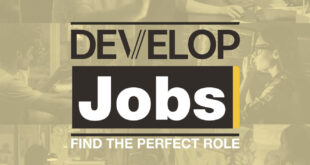What is your job role?
I am currently a freelance environment artist for Bluehole Ginno on its latest early access release PlayerUnknown’s Battlegrounds. Prior to this, I was working at Rockstar Games and Creative Assembly.
I’d look to see if the applicant is passionate about the studio
What qualifications and/or experience do you need?
Getting into the games industry as an artist usually does not require an educational background. I am self-taught with no degree.
I think the most important thing is to not only be passionate about making video game art but also to be committed and be willing to put the work into achieving becoming a video game artist.
The art spectrum in the industry is also very broad. This ranges from vegetation art, weapon art, asset art to lighting art. I would recommend trying each of these areas out, you will quickly find yourself honing in on a specific area that you naturally feel comfortable working on. Having the right contacts is important as this allows you get a possible foot in the door with a studio. To do this I would recommend joining a site such as Polycount. This website allows you to post work in progress shots of your portfolio work and receive feedback from experienced industry artists.
This will allow you the opportunity to learn industry standard tools and workflows for the specific area that you have chosen to specialise in.
I would also recommend visiting a well-known games industry educational website called 80level. This website is filled with educational tutorials tips and techniques provided by artists who have experience in the common industry practices. It’s a must for budding artists and students.
If you were interviewing someone, what do you look for?
I’d first and foremost look to see if the applicant has not only a passion for video game art but is someone who is passionate about the studio of which he or she has applied to. This would be visible in their portfolio. I always recommend to budding artists or students to aim their portfolio work towards the art style of the studio they wish to join.
Secondly, I would look for a willingness to learn and to see if they would want to climb the art ranks within the studio. Lastly, I would also look to see if they are a self-starter who can work independently and have the confidence to meet deadlines under pressure while taking on board feedback to help them progress. Showing confidence along with a full understanding of the job you are applying for is also key.
What opportunities are there for career progression?
There is a vast range of progressive routes. If an individual enters as a junior environment artist, they can climb to an environment artist followed by a senior environment artist, which focuses on a specific area like those mentioned earlier.
If they show leadership skills and work well in stressful situations they can climb to a lead environment artist role and manage the specific areas.

 MCV/DEVELOP News, events, research and jobs from the games industry
MCV/DEVELOP News, events, research and jobs from the games industry


